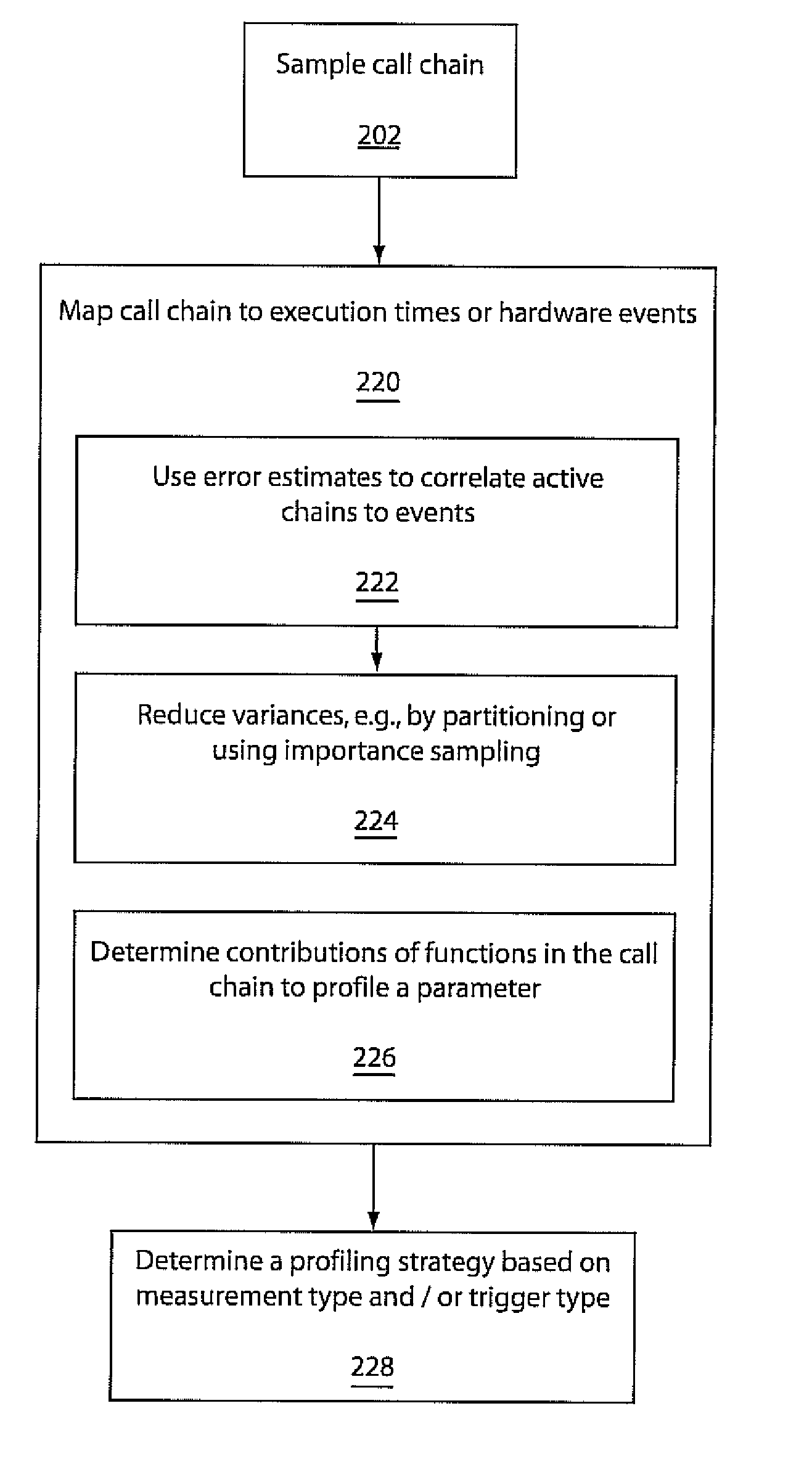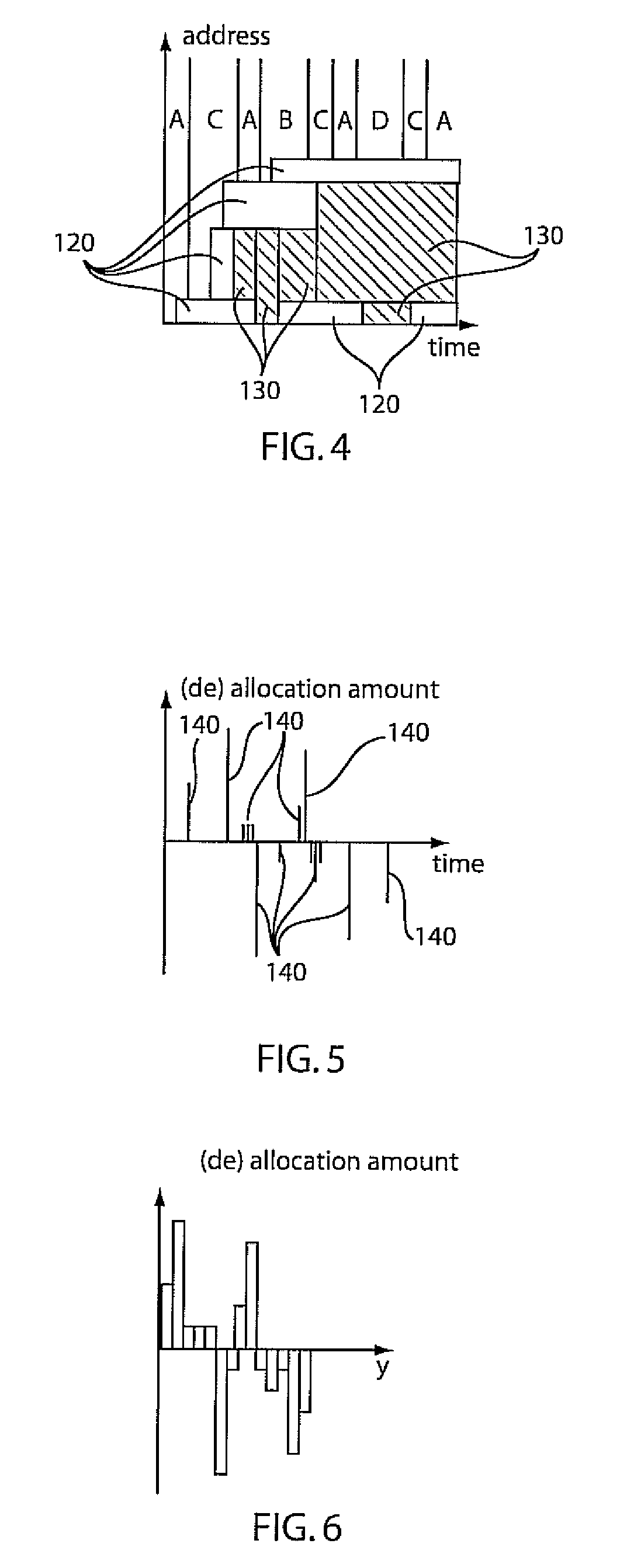Probabilistic framework for the highly efficient correlation of call chains with hardware events
a probability framework and call chain technology, applied in the field of program profiling, can solve the problems of large overhead, limited or non-existent cache misses or memory use, and the choice of detailed profiling of other hardware resources, and achieve the effect of reducing overhead
- Summary
- Abstract
- Description
- Claims
- Application Information
AI Technical Summary
Benefits of technology
Problems solved by technology
Method used
Image
Examples
Embodiment Construction
[0026]Highly efficient probabilistic systems and methods for profiling are provided that include detailed resource usage information indexed by full call chain and time. A call chain is the history of function calls formed when one method calls another method. An analytical framework is provided with estimates of the accuracy for different profiling scenarios. This probabilistic approach is applicable to implement a memory profiling tool that adds minimal overhead and does not require recompilation or relinking. The tool provides the memory use of each call chain over a time line. An upper bound can be provided for the memory overhead compared to an unprocessed run, and experimental results confirm that execution time and memory use overhead is less than 10% of the unprofiled, optimized execution.
[0027]A novel probabilistic profiling approach for general resource use is provided that permits the creation of profiling tools with very small relative overhead, e.g., a small ratio of th...
PUM
 Login to View More
Login to View More Abstract
Description
Claims
Application Information
 Login to View More
Login to View More - R&D
- Intellectual Property
- Life Sciences
- Materials
- Tech Scout
- Unparalleled Data Quality
- Higher Quality Content
- 60% Fewer Hallucinations
Browse by: Latest US Patents, China's latest patents, Technical Efficacy Thesaurus, Application Domain, Technology Topic, Popular Technical Reports.
© 2025 PatSnap. All rights reserved.Legal|Privacy policy|Modern Slavery Act Transparency Statement|Sitemap|About US| Contact US: help@patsnap.com



